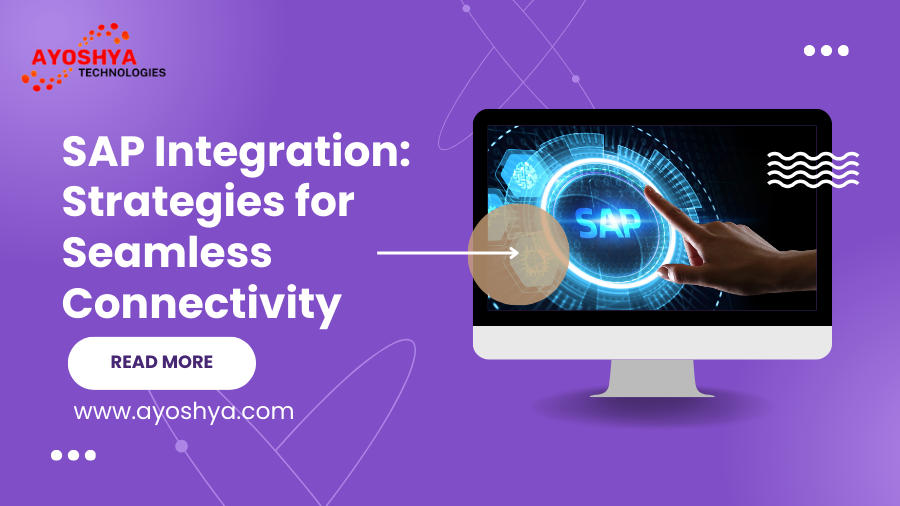SAP Integration: Strategies for Seamless Connectivity
I. Introduction to SAP Integration
SAP integration is a critical aspect of modern business operations, enabling seamless connectivity across various systems. Despite its significance, organizations often face challenges in achieving truly integrated workflows. This article explores the strategies and best practices for mastering SAP integration, ensuring smooth connectivity and optimal performance.
II. Understanding SAP Integration
At its core, SAP integration involves the seamless exchange of data between different SAP modules and external systems. The increasing complexity of business processes makes integration a necessity for organizations striving to enhance efficiency and decision-making.
III. Common Integration Challenges
While SAP integration brings numerous benefits, it comes with its set of challenges. Data inconsistency, system compatibility issues, and security concerns are common hurdles that organizations need to address to achieve successful integration.
IV. Strategies for Seamless SAP Integration
Achieving seamless SAP integration requires comprehensive planning, selecting the right integration tools, and implementing effective data mapping and transformation processes. A well-thought-out strategy lays the foundation for successful integration projects.
V. Role of API in SAP Integration
Application Programming Interfaces (APIs) play a crucial role in SAP integration, facilitating communication between different software systems. Understanding the benefits and challenges of API integration is key to leveraging its potential for seamless connectivity.
VI. Real-time vs Batch Integration
Choosing between real-time and batch integration depends on specific business requirements. This section explores the pros and cons of both approaches, helping organizations make informed decisions based on their needs.
VII. Case Studies: Successful Integration Stories
Learning from real-world examples is invaluable. Examining organizations that have mastered integration provides insights into best practices and potential pitfalls to avoid.
VIII. Testing and Validation in Integration
Rigorous testing and validation are essential steps in the integration process. This section emphasizes the importance of thorough testing and outlines best practices for ensuring the reliability of integrated systems.
IX. Scalability and Future-Proofing
As businesses evolve, scalability becomes a crucial consideration in integration. Planning for future growth and staying informed about emerging trends are essential for building a resilient and future-proof integration infrastructure.
X. User Training for Integrated Systems
Even the most advanced integrated systems won’t yield optimal results without user adoption. This section explores the importance of user training programs to ensure that employees can effectively navigate and utilize integrated workflows.
XI. Overcoming Resistance to Change
Resistance to change is a common obstacle in integration projects. Identifying and addressing resistance early on, along with implementing effective change management strategies, is vital for the success of integration initiatives.
XII. Cost Considerations in SAP Integration
While the benefits of integration are significant, organizations need to consider the initial costs and long-term savings. Proper budgeting and understanding the potential for long-term cost reductions contribute to the success of integration projects.
XIII. Monitoring and Maintenance
Integration is an ongoing process that requires continuous monitoring and proactive maintenance. This section explores strategies for monitoring performance and ensuring that integrated systems operate at their best.
XIV. Conclusion
In conclusion, mastering SAP integration is a journey that requires careful planning, the right tools, and ongoing commitment. By addressing common challenges, implementing effective strategies, and staying adaptable to future trends, organizations can achieve seamless connectivity and unlock the full potential of their SAP systems.
FAQs
- How long does it typically take to implement SAP integration successfully?
- The timeline for integration varies depending on the complexity of the project, but on average, it can take several months to a year for successful implementation.
- Can SAP integration be achieved without significant disruptions to ongoing business operations?
- Yes, with proper planning and execution, It can be carried out with minimal disruptions to ongoing business operations.
- What role does change management play in integration?
- Change management is crucial in overcoming resistance to change and ensuring that employees adapt smoothly to new integrated workflows.
- Are there any industry-specific challenges in integration?
- Yes, industries may face unique challenges based on their specific business processes and regulations, requiring customized approaches to integration.
- How often should integrated systems be monitored for performance?
- Continuous monitoring is recommended, but at a minimum, regular checks should be conducted to identify and address performance issues promptly.
You may be interested in:
The Role of SAP Business One Partner
The Evolving Role of SAP Consultant in the Digital Age
SAP CPI Certification: Your Path to Becoming an Integration Expert



